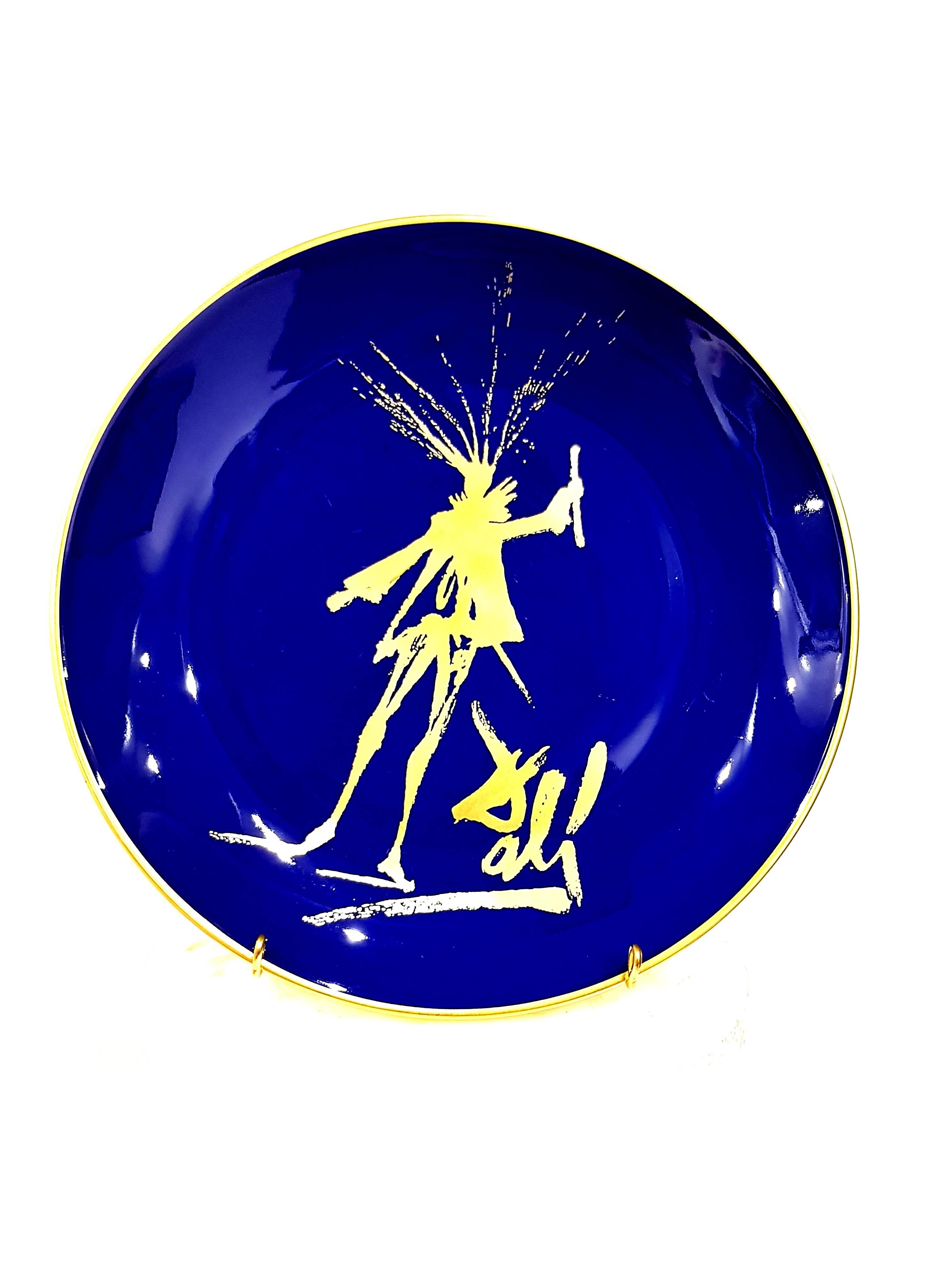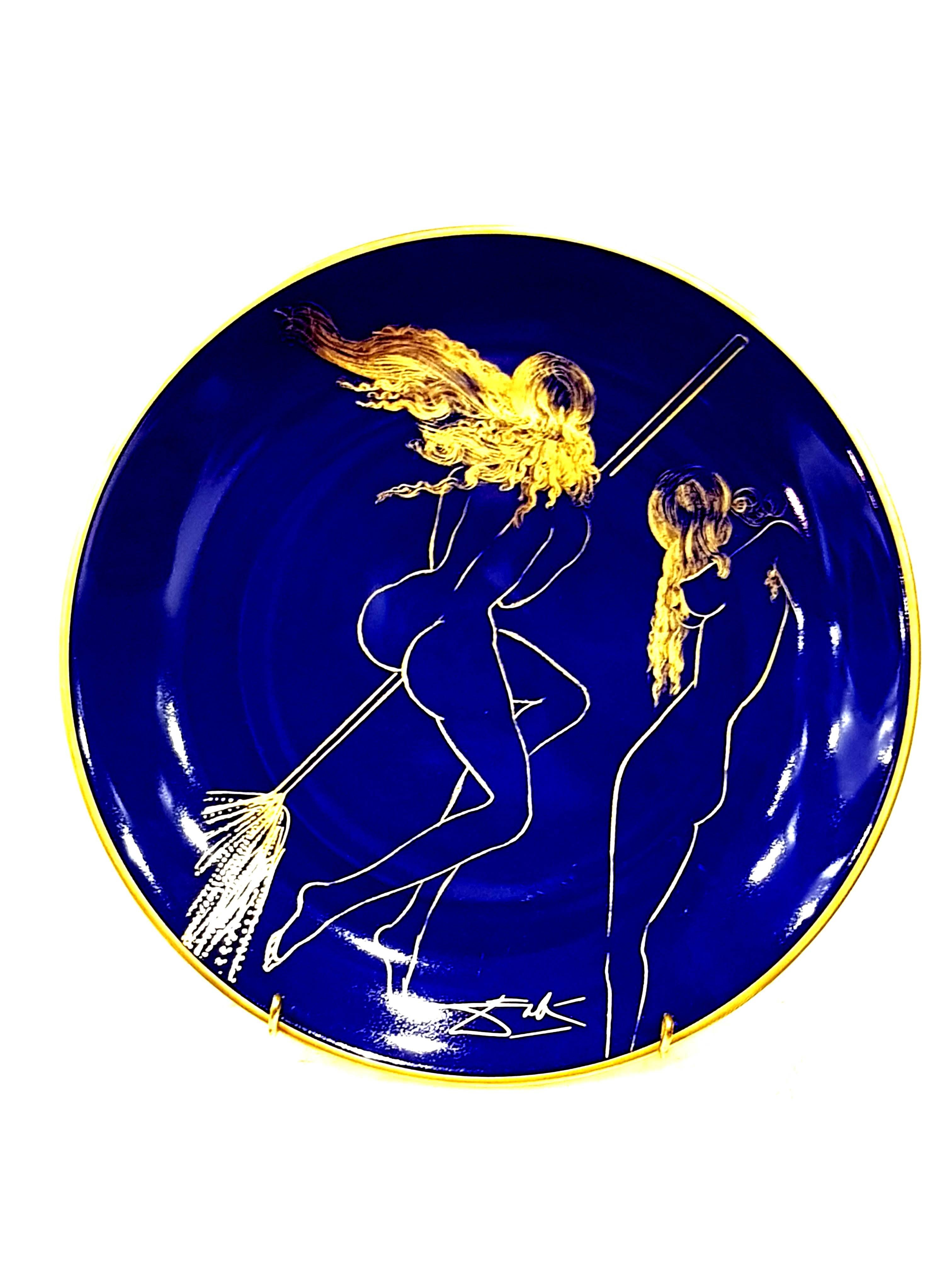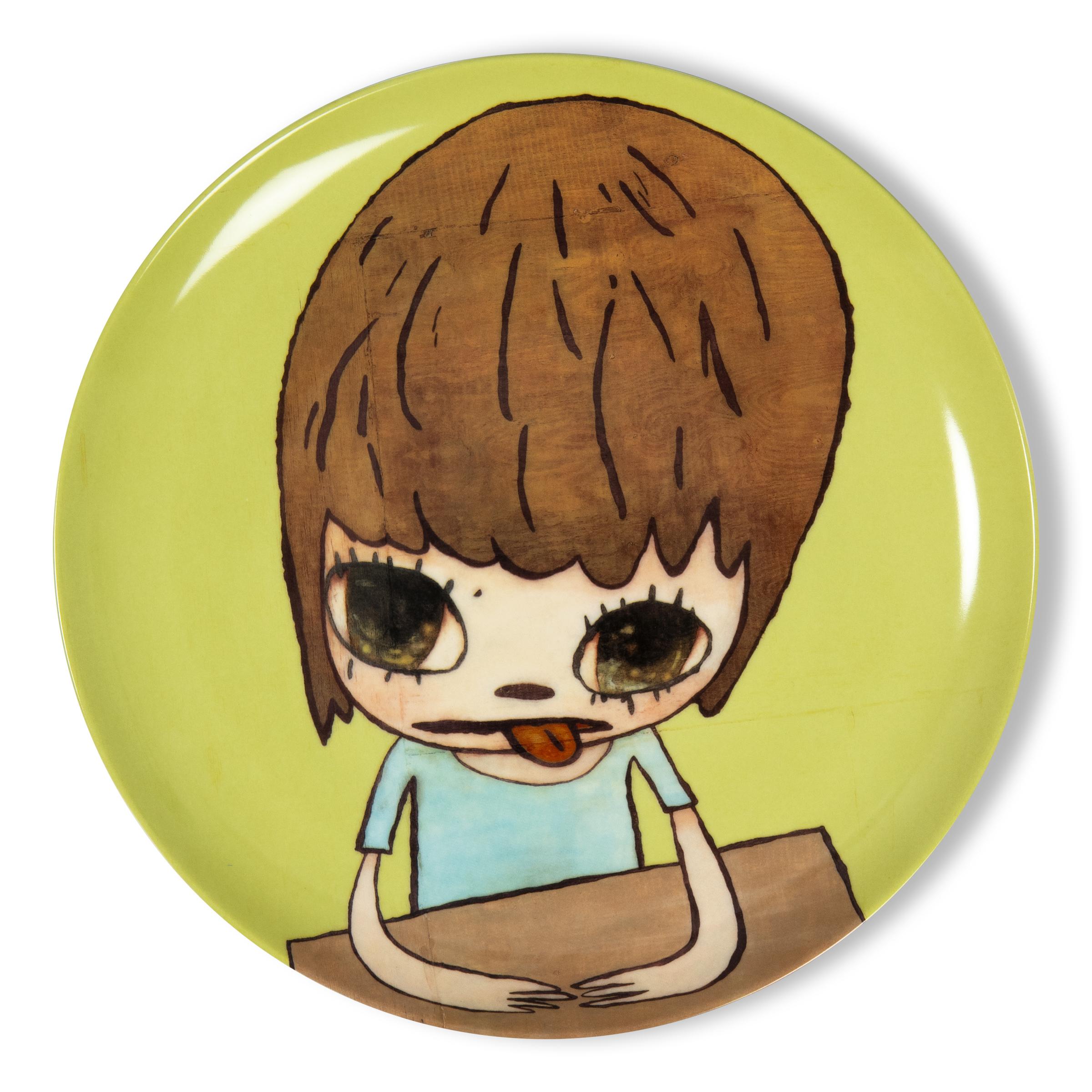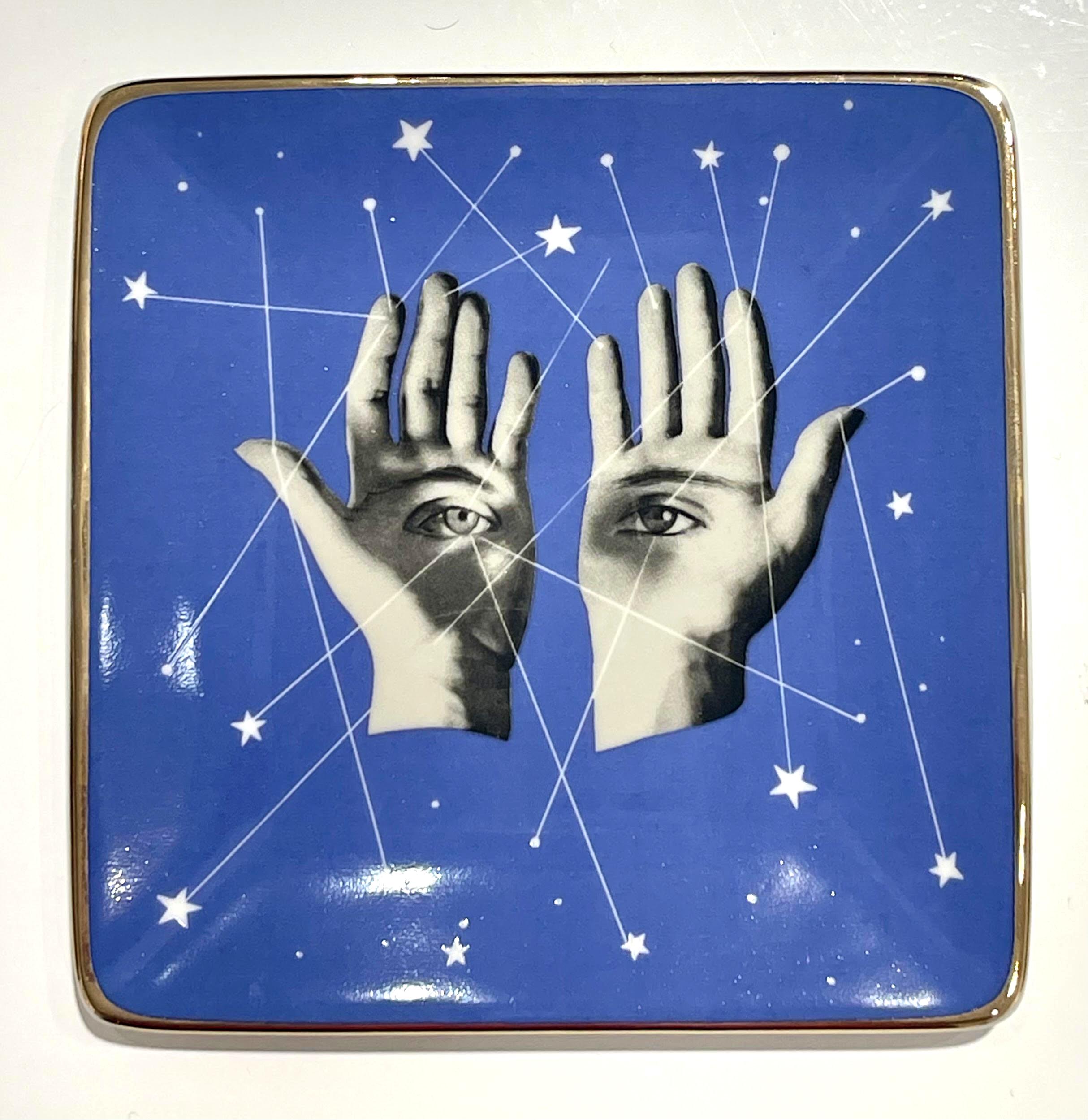Items Similar to Rosenthal plate
Want more images or videos?
Request additional images or videos from the seller
1 of 3
Salome (Wolfgang Ludwig Cihlarz)Rosenthal plate1985
1985
About the Item
SALOME
Rosenthal Plate, 1985
porcelain
10½ in. diam. 26 cm.
Edition 143/3000
signed and dated on lower right
- Creator:Salome (Wolfgang Ludwig Cihlarz) (1954, German)
- Creation Year:1985
- Dimensions:Height: 10.5 in (26.67 cm)Diameter: 0.5 in (1.27 cm)
- Medium:
- Movement & Style:
- Period:
- Condition:
- Gallery Location:New York, NY
- Reference Number:1stDibs: LU858561822
About the Seller
5.0
Recognized Seller
These prestigious sellers are industry leaders and represent the highest echelon for item quality and design.
Established in 1981
1stDibs seller since 2011
33 sales on 1stDibs
Typical response time: Several days
Associations
Art Dealers Association of America
- ShippingRetrieving quote...Ships From: New York, NY
- Return PolicyThis item cannot be returned.
More From This SellerView All
- PORTRAIT OF ADELE BLOCH-BAUER plateBy (after) Gustav KlimtLocated in New York, NYArtist Reproduction plate. Edition 1401A Reihe "Gustav Klimt – Phantastische Meisterwerke" mit einem diagonalen Durchmesser von 22 cm und einer Goldumrandung an. Es handelt sich dabei um die Ausgabe "...." aus dem Jahr 1990, Teller-Nr. ?, die als Reproduktion im Auftrag des Hauses Lilien Porzellan...Category
1990s Art Deco Figurative Prints
MaterialsPorcelain
- FIGURE WRITING REFLECTED ON MIRRORBy Francis BaconLocated in New York, NYFrancis Bacon color lithograph on Arches paper. Edition 50 of 180. Not framed. MOURLOT IMP - stamped on bottom left DESCHAMPS LITH. - stamped on bottom rightCategory
Late 20th Century Modern Figurative Prints
MaterialsLithograph
- UNTITLED (From the ARTSOUNDS Collection)By Les LevineLocated in New York, NYLES LEVINE Untitled (from the Artsounds Collection), 1986 color offset print, ed. 200 12 x 12 cm. 30.5 x 30.5 cm. Edition 49/100 signed and dated in pen by the artist, numbered in...Category
1980s Conceptual Portrait Prints
MaterialsOffset
- CITA EN EL ESCONDITEBy Maripaz JaramilloLocated in New York, NYCouple embracing, kissing bold and dark English translation: Hideaway DateCategory
1980s Contemporary Figurative Prints
MaterialsScreen
- STRONG MANBy Julio LarrazLocated in New York, NYEdition of 30 circus ballerinaCategory
1990s Contemporary Figurative Prints
MaterialsScreen
- Cita en el Escondite (Dating in the Hideaway)By Maripaz JaramilloLocated in New York, NYserigraph on paper, image of a couple kissing.Category
1980s Feminist Figurative Prints
MaterialsScreen, Paper
You May Also Like
- Faust - Limoges Porcelain Blue and GoldBy (after) Salvador DaliLocated in Collonge Bellerive, Geneve, CHLimoges porcelain in "Bleu de Sèvres" and gold. Artist: Salvador Dali Exclusive limited edition to 2000 copies "Raynaud & Co. Limoges", France, 1968. "Faust" drawn by Salvador Dalí...Category
1960s Modern Mixed Media
MaterialsPorcelain
- Venus - Limoges Porcelain Blue and GoldBy (after) Salvador DaliLocated in Collonge Bellerive, Geneve, CHLimoges porcelain in "Bleu de Sèvres" and gold. Artist: Salvador Dali Exclusive limited edition to 2000 copies "Raynaud & Co. Limoges", France, 1968. "Silhouette de Faust" drawn by...Category
1960s Modern Mixed Media
MaterialsPorcelain
- Sabat - Limoges Porcelain Blue and GoldBy (after) Salvador DaliLocated in Collonge Bellerive, Geneve, CHLimoges porcelain in "Bleu de Sèvres" and gold. Artist: Salvador Dali Exclusive limited edition to 2000 copies "Raynaud & Co. Limoges", France, 1968. "Sabat" drawn by Salvador Dalí...Category
1960s Modern Mixed Media
MaterialsPorcelain
- Yoshitomo Nara, Girl in the Moon - Limited Edition Plate, Japanese ArtBy Yoshitomo NaraLocated in Hamburg, DEYoshitomo Nara (Japanese, born 1959) Girl in the Moon, 2022 Medium: Porcelain plate (fine bone china) Dimensions: 10 1/2 in diameter 26.7 cm diameter Edition of 250: Printed signatu...Category
21st Century and Contemporary Pop Art Figurative Prints
MaterialsPorcelain
- Things to Come trayBy Herbert BayerLocated in New York, NYHerbert Bayer Things to Come tray, 2018 Porcelain dish with metallic gold edge and silkscreened image Limited edition of an unknown quantity, originally distributed by the Museum of Modern Art, before it sold out. Measurements: Box: 5.5 x 5.5 inches Tray: 5 x 5 inches Provenance: Originally distributed by the Museum of Modern Art, before it sold out Manufacturer: Galison Publishing LLC and The Museum of Modern Art Herbert Bayer biography: Artistic polymath Herbert Bayer was one of the Bauhaus’s most influential students, teachers, and proponents, advocating the integration of all arts throughout his career. Bayer began his studies as an architect in 1919 in Darmstadt. From 1921 to 1923 he attended the Bauhaus in Weimar, studying mural painting with Vasily Kandinsky and typography, creating the Universal alphabet, a typeface consisting of only lowercase letters that would become the signature font of the Bauhaus. Bayer returned to the Bauhaus from 1925 to 1928 (moving in 1926 to Dessau, its second location), working as a teacher of advertising, design, and typography, integrating photographs into graphic compositions. He began making his own photographs in 1928, after leaving the Bauhaus; however, in his years as a teacher the school was a fertile ground for the New Vision photography passionately promoted by his close colleague László Moholy-Nagy, Moholy-Nagy’s students, and his Bauhaus publication Malerei, Photographie, Film (Painting, photography, film). Most of Bayer’s photographs come from the decade 1928–38, when he was based in Berlin working as a commercial artist. They represent his broad approach to art, including graphic views of architecture and carefully crafted montages. In 1938 Bayer emigrated to the United States with an invitation from Alfred H. Barr, Jr., founding director of The Museum of Modern Art, to apply his theories of display to the installation of the exhibition Bauhaus: 1919–28 (1938) at MoMA. Bayer developed this role through close collaboration with Edward Steichen, head of the young Department of Photography, designing the show Road to Victory (1942), which would set the course for Steichen’s influential approach to photography exhibition. Bayer remained in America working as a graphic designer for the remainder of his career. -Courtesy of MOMA More about Herbert Bayer: Herbert Bayer (1900-1985) was born in Austria, where he entered into an apprenticeship under the architect and designer, Georg Smidthammer, with whom Bayer learned drawing, painting, and architectural drafting, inspired by nature and without formal knowledge of art history. In 1920, Bayer discovered the theoretical writings of the artist Vassily Kandinsky, as well as Walter Gropius’ 1919 Bauhaus manifesto, in which Gropius declared the necessity for a return to crafts, in which were found true creativity and inspiration. Bayer traveled to Weimar to meet Gropius in October of 1921 and was immediately accepted into the Bauhaus. There, he was deeply influenced by the instruction of Kandinsky, Johannes Itten and Paul Klee. In 1928 Bayer moved to Berlin together with several members of the Bauhaus staff including Gropius, Moholy-Nagy and Marcel Breuer. He found work as a freelance graphic designer, particularly with German Vogue, under its art director Agha. When the latter returned to Paris, Bayer joined the staff full time, and also worked increasingly with Dorland, the magazine's principle advertising agency. It was in the period from 1928 to his emigration to America in 1938 that he developed his unique vision as an artist, combining a strongly modernist aesthetic sense with a rare ability to convey meaning clearly and directly. This seamless combination of art, craft and design mark Bayer as true prophet of Bauhaus theories. Bayer followed Gropius to America in 1938, and set his breadth of skills to work later that year in designing the landmark Bauhaus 1918-1928 exhibition at the Museum of Modern Art. Bayer flourished in New York as a designer and architect, but it was his meeting with the industrialist Walter Paepcke in 1946 that allowed him to harness his concepts of 'total design' to the postwar boom. Paepcke was developing Aspen as a cultural and intellectual destination, and found in Bayer the perfect collaborator. Bayer was designer, educator and indeed architect for Paepcke's Aspen Institute...Category
2010s Bauhaus More Art
MaterialsMetal
- Bronze Mask with Turquoise EmbellishmentBy Lois SattlerLocated in Boston, MAArtist Commentary: Bronze Mask with Turquoise Embellishment - Bronze colored mask wall hanging with an ancient bronze patina glaze and turquoise eyes. Medium: ceramic porcelain. Size...Category
21st Century and Contemporary Abstract Impressionist Figurative Prints
MaterialsPorcelain, Ceramic





